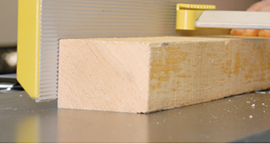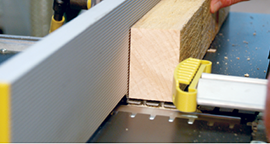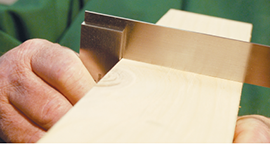How to Dimension Timber Accurately using a Planer Thicknesser
This guide explains why a planer thicknesser is an essential tool for accurately sizing timber.
|
How to Dimension Timber Accurately using a Planer Thicknesser
Most woodworkers, whether amateur or professional, will invariably at some point need to use a planer thicknesser. There are various reasons for this:
|
|
| The Diagram opposite shows an exaggerated cross section of a typical rough-sawn piece of timber which will be used to illustrate the different results that can be achieved using both a standalone thicknesser and a planer thicknesser. |
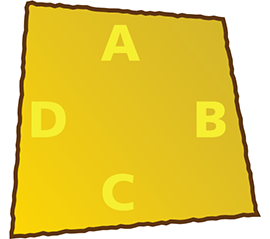 |
|
How a Thicknesser Works |
|
|
1 |
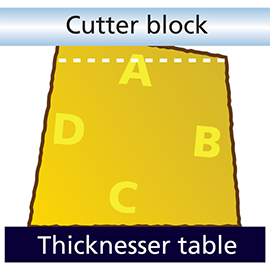 |
|
|
|
|
2 Now these opposite faces are parallel, we can see by turning either surface B or D face down on the table that we are only able to plane them parallel to each other but never at 90º to surfaces A or C.
|
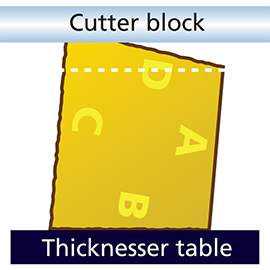 |
|
|
|
|
3 It can now be seen that no matter which way the timber is turned, only a parallelogram profile can be achieved. |
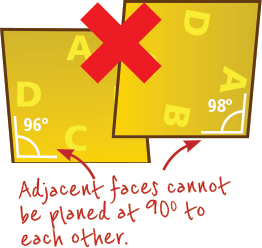 |
|
|
|
|
1 Plane surface C to be flat using the machine in the planing mode.
|
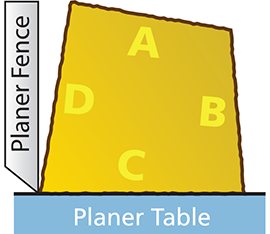 |
|
|
|
|
2 Place surface C against the fence, which is set to 90º, and plane surface B until it is at 90º to surface C.
|
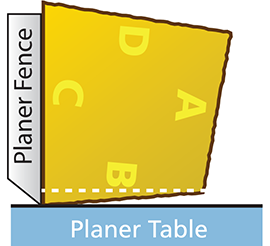 |
|
|
|
|
3 Once we have two adjacent faces at 90º to each other, the remaining opposite faces can be thicknessed parallel by using them as a reference.
|
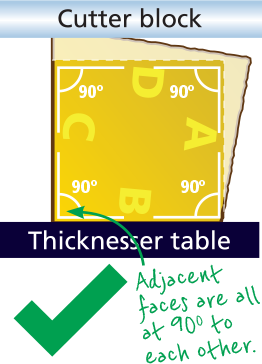 |








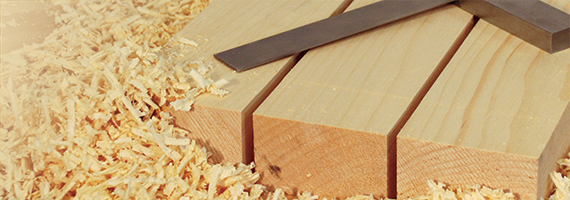
.png)
